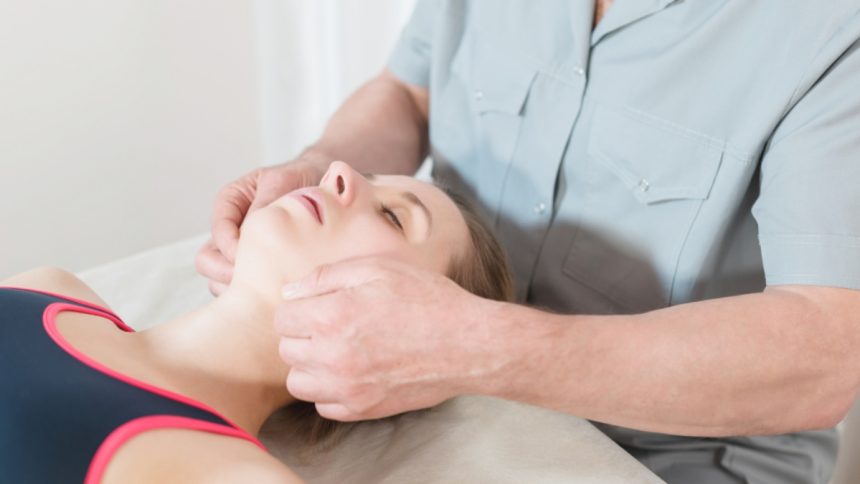The Temporomandibular Joint: A Complex Mechanism
The temporomandibular joint, often abbreviated as TMJ, is a small yet intricate joint that connects your jawbone to your skull. This joint acts as a sliding hinge, allowing you to open and close your mouth, chew, speak, and yawn. Despite its size, the TMJ plays a crucial role in our daily lives, facilitating essential functions we often take for granted.
Temporomandibular Joint Disorders: When Things Go Awry
Temporomandibular joint disorders, commonly referred to as TMD, encompass a range of conditions affecting the jaw joint and surrounding muscles. These disorders can manifest in various ways, causing discomfort, pain, and limited mobility. The impact of TMD on an individual’s life can be significant, affecting their ability to eat, speak, and even sleep comfortably.
Recognizing the Signs and Symptoms
TMD can present with a wide array of symptoms, making it challenging to diagnose without professional help. Common signs include:
- Pain or tenderness in the jaw area
- Difficulty or discomfort while chewing
- Clicking or popping sounds when opening or closing the mouth
- Facial pain that may extend to the neck and shoulders
- Headaches, particularly in the temple area
- Locking of the jaw joint, making it difficult to open or close the mouth
- Earaches or ringing in the ears (tinnitus)
- Dizziness or vertigo
If you’re experiencing any of these symptoms persistently, it may be time to seek professional help. A quick online search for “tmj therapy near me” can help you find local specialists who can provide an accurate diagnosis and appropriate treatment plan.
The Role of Physical Therapy in TMJ Treatment
Physical therapy plays a vital role in managing TMD, offering non-invasive techniques to alleviate pain, improve function, and prevent future complications. TMJ physical therapy focuses on restoring normal jaw movement, reducing pain and inflammation, and strengthening the muscles that support the joint.
Key Components of TMJ Physical Therapy
Manual Therapy Techniques
Physical therapists use hands-on techniques to manipulate the jaw and surrounding tissues. These may include:
- Soft tissue massage to relax tense muscles
- Joint mobilization to improve range of motion
- Myofascial release to address trigger points and tension in the fascia
Therapeutic Exercises
A tailored exercise program is crucial for TMJ rehabilitation. Exercises may focus on:
- Improving jaw mobility and coordination
- Strengthening muscles that support the jaw
- Correcting postural imbalances that may contribute to TMD
Pain Management Strategies
Physical therapists employ various techniques to manage pain associated with TMD:
- Heat and cold therapy
- Ultrasound treatment
- Electrical stimulation
- Biofeedback training
Education and Self-Management
An essential aspect of TMJ physical therapy is patient education. Therapists provide guidance on:
- Proper jaw posture and alignment
- Stress reduction techniques
- Dietary modifications to reduce jaw strain
- Ergonomic adjustments in daily activities
The TMJ Physical Therapy Process
When you begin TMJ physical therapy, you can expect a comprehensive approach to treatment:
Initial Assessment
Your therapist will conduct a thorough evaluation, which may include:
- Reviewing your medical history
- Assessing jaw movement and function
- Examining posture and related muscle groups
- Evaluating pain levels and triggers
Customized Treatment Plan
Based on the assessment, your therapist will develop a personalized treatment plan tailored to your specific needs and goals.
Regular Sessions and Progress Monitoring
You’ll attend regular therapy sessions, during which your therapist will:
- Perform manual techniques
- Guide you through exercises
- Apply pain management modalities
- Assess your progress and adjust the treatment plan as needed
Home Exercise Program
Your therapist will provide a home exercise program to complement in-clinic sessions. Consistency with these exercises is crucial for optimal results.
Benefits of TMJ Physical Therapy
TMJ physical therapy offers numerous benefits for individuals struggling with TMD:
- Pain reduction and management
- Improved jaw function and range of motion
- Enhanced quality of life
- Reduced reliance on medication
- Prevention of further joint damage
- Improved sleep quality
- Decreased headache frequency and intensity
When to Seek TMJ Physical Therapy
If you’re experiencing persistent jaw pain or discomfort, it’s essential to consult a healthcare professional. They may recommend TMJ physical therapy as part of your treatment plan. To find a qualified provider, search for “tmj physical therapy near me” to locate specialists in your area who can offer expert care.
Complementary Approaches to TMJ Treatment
While physical therapy is a cornerstone of TMD management, it often works best when combined with other treatments:
Dental Interventions
Dentists may recommend:
- Oral appliances or splints to reduce teeth grinding
- Dental work to correct bite issues
Medications
In some cases, healthcare providers may prescribe:
- Pain relievers
- Muscle relaxants
- Anti-inflammatory drugs
Lifestyle Modifications
Simple changes can make a big difference:
- Stress management techniques
- Dietary adjustments
- Improving sleep habits
The Road to Recovery: What to Expect
Recovery from TMD is often a gradual process that requires patience and commitment. While some individuals may experience relief quickly, others may need ongoing management. The key is to work closely with your physical therapist and healthcare team, following their recommendations consistently.
Empowering Yourself in TMJ Management
Understanding TMD and actively participating in your treatment can significantly impact your recovery. By engaging in physical therapy, practicing home exercises, and making necessary lifestyle changes, you can take control of your TMJ health and improve your overall quality of life.
Remember, everyone’s journey with TMD is unique. What works for one person may not work for another, which is why personalized care is so crucial. If you’re struggling with TMJ issues, don’t hesitate to seek professional help. With the right treatment approach, including TMJ physical therapy, you can find relief and regain control of your jaw health.
Lynn Martelli is an editor at Readability. She received her MFA in Creative Writing from Antioch University and has worked as an editor for over 10 years. Lynn has edited a wide variety of books, including fiction, non-fiction, memoirs, and more. In her free time, Lynn enjoys reading, writing, and spending time with her family and friends.















